The Top 5 Games We Played At GENCON 2015
GenCon 2015 was a blast. Record attendance was reached, hundreds were spent on games, and for four days, board games were all the rage...at least in Indianapolis. I demoed a lot of games, and while most were good enough, these five in particular stood out as my favorites and ones that I'm confident the GT community would love to have as well. Find one for you and see what you've been missing out on!
5. STAR TREK: THE FIVE YEAR MISSION
Publisher: Mayfair Games
What Is It?: Co-op Dice Game
General Rules:
- Each player picks a crew member of the Enterprise team they wish to represent...captain always goes first.
- Each turn begins with a player flipping over either a blue, yellow, or red card. Each card contains a mission or challenge and dice combinations which the players must roll to complete that mission.
- Players roll their dice and use their dice to complete or partially complete missions for other players.
- If more than three cards of each character are currently on the table and the next player draws a card, the oldest red card is retired as a failed mission.
- Players win by clearing at least 10 specially marked mission cards (typically yellow) and at least one marked mission card under blue (much more rare).
- Players lose if they have five failed missions or the Enterprise is destroyed.
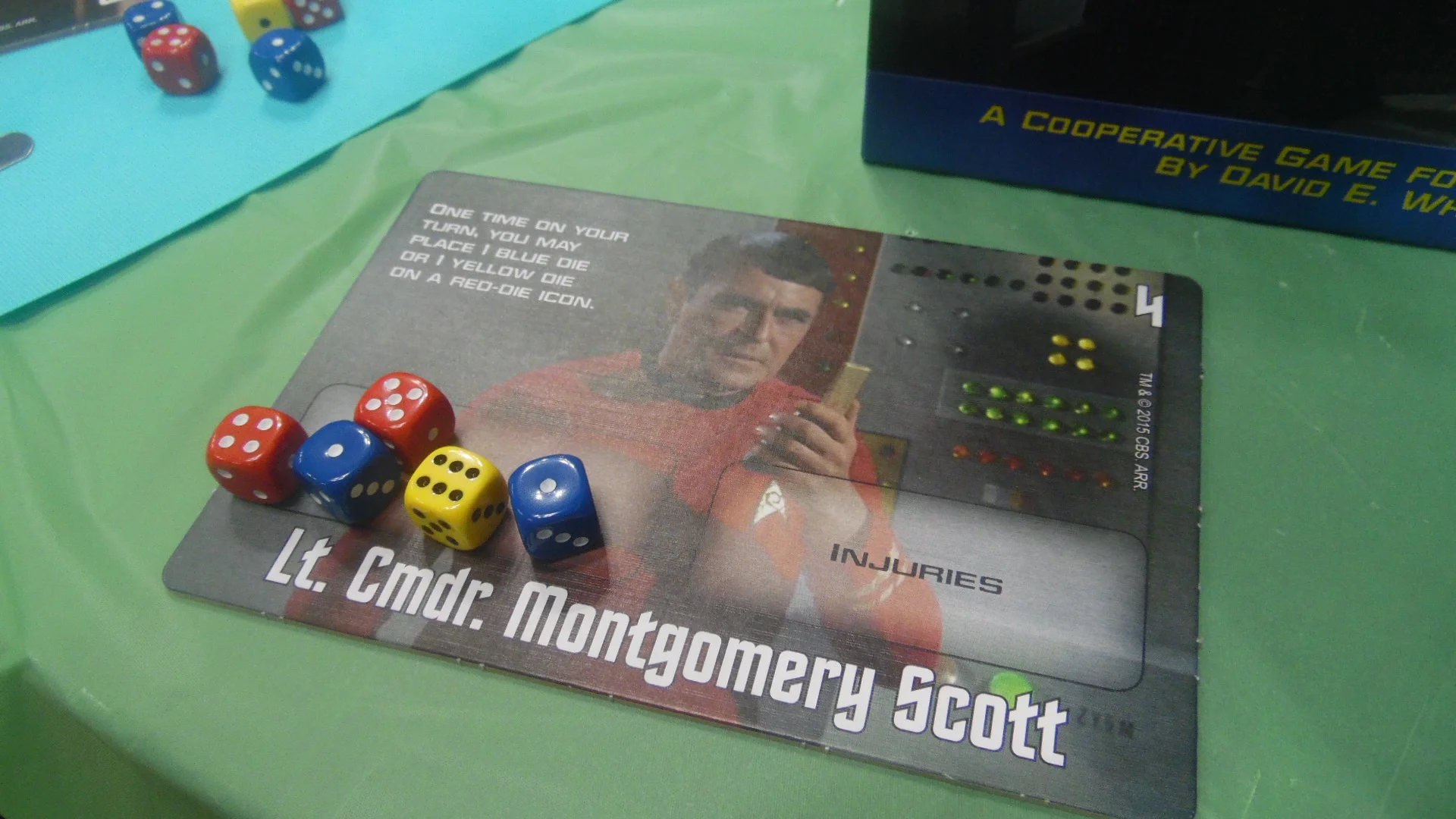
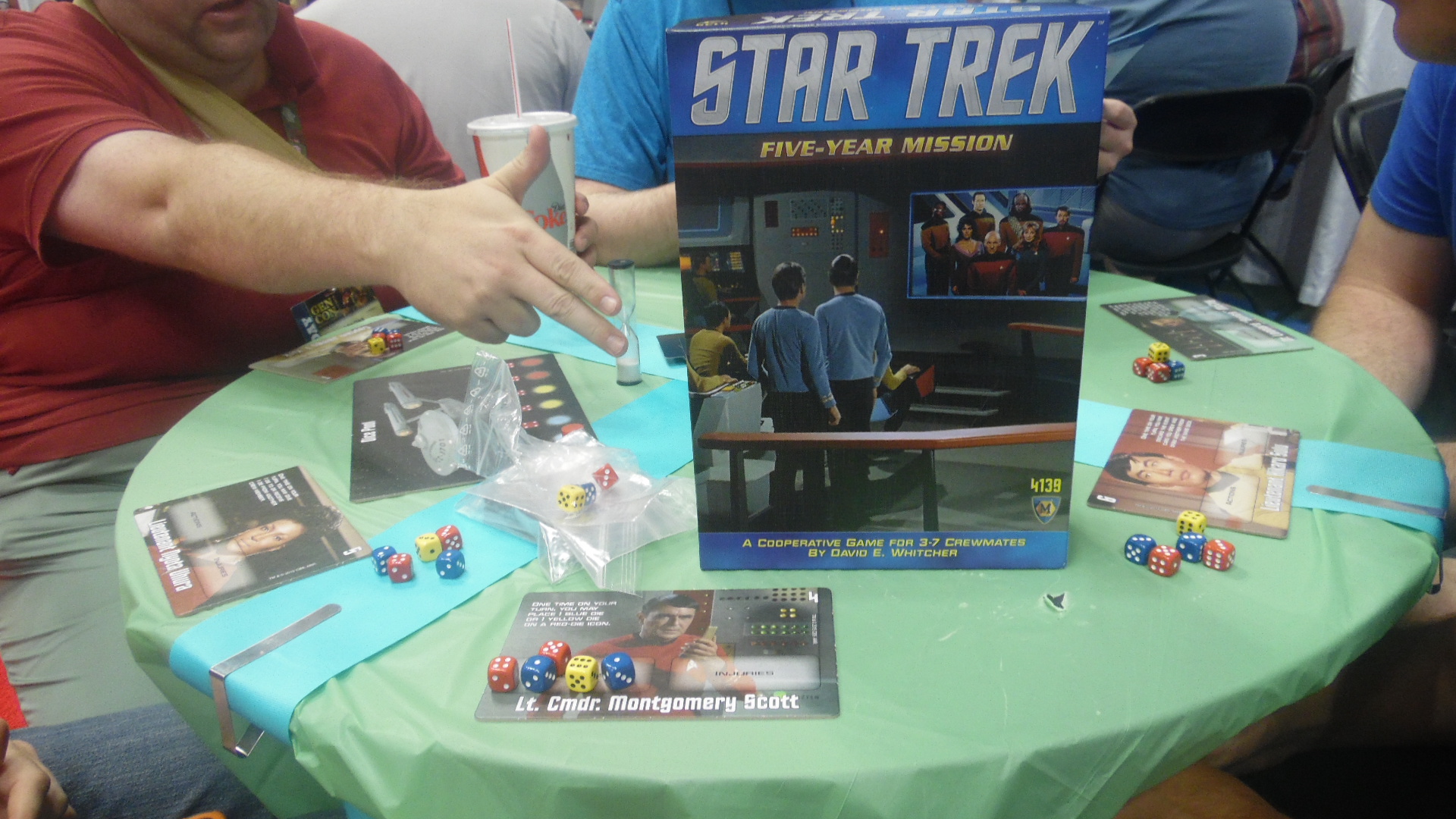
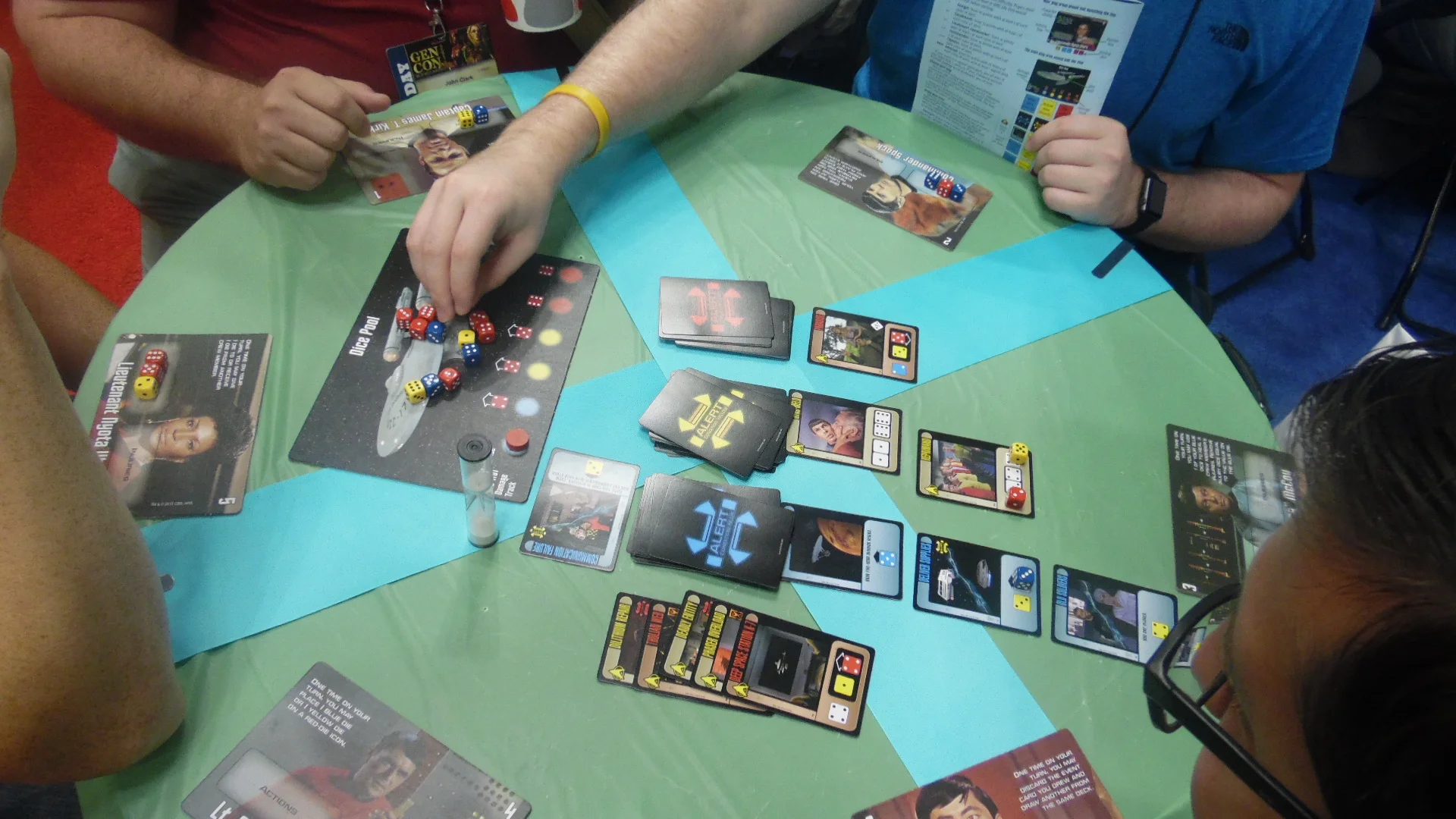
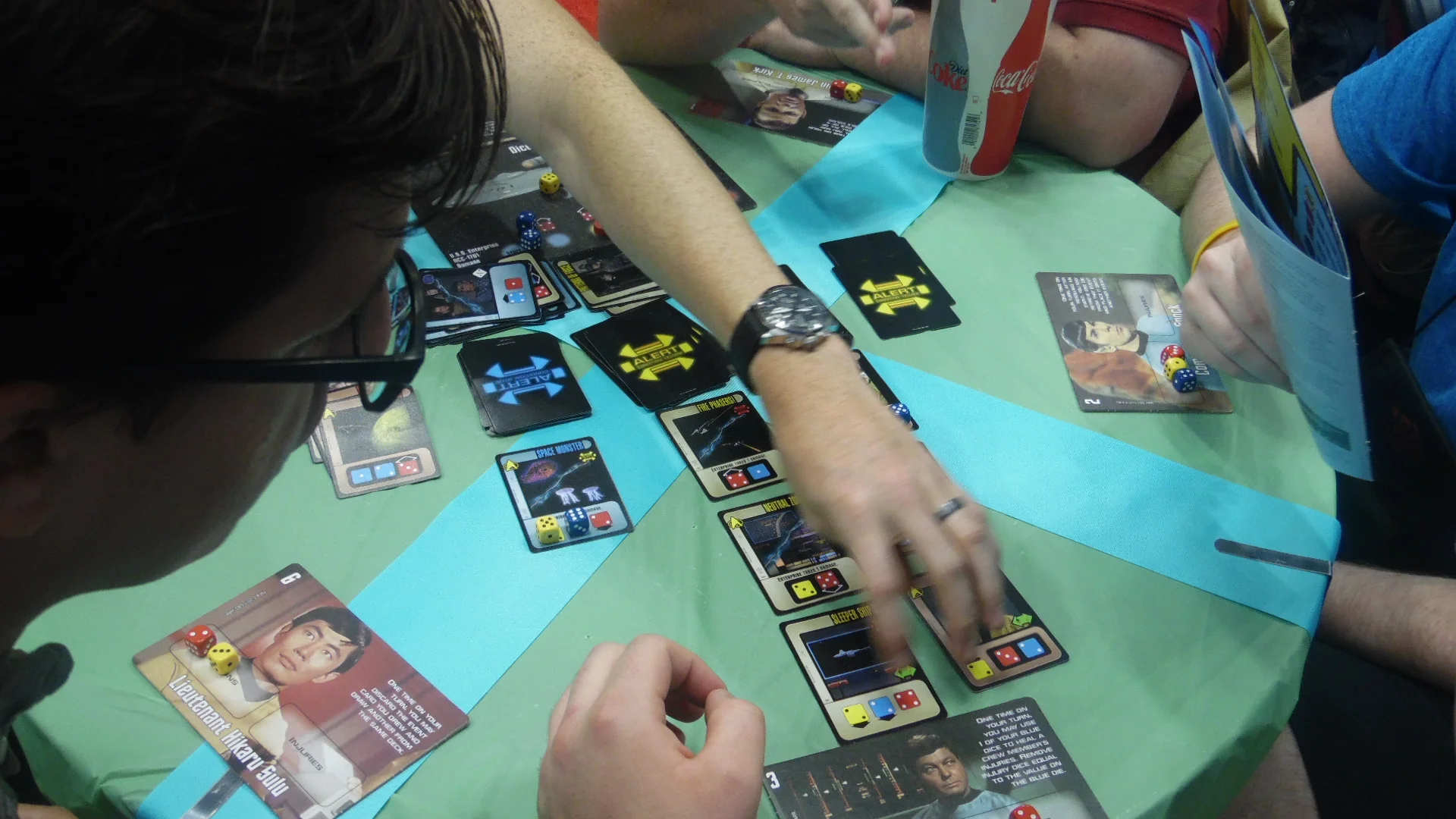
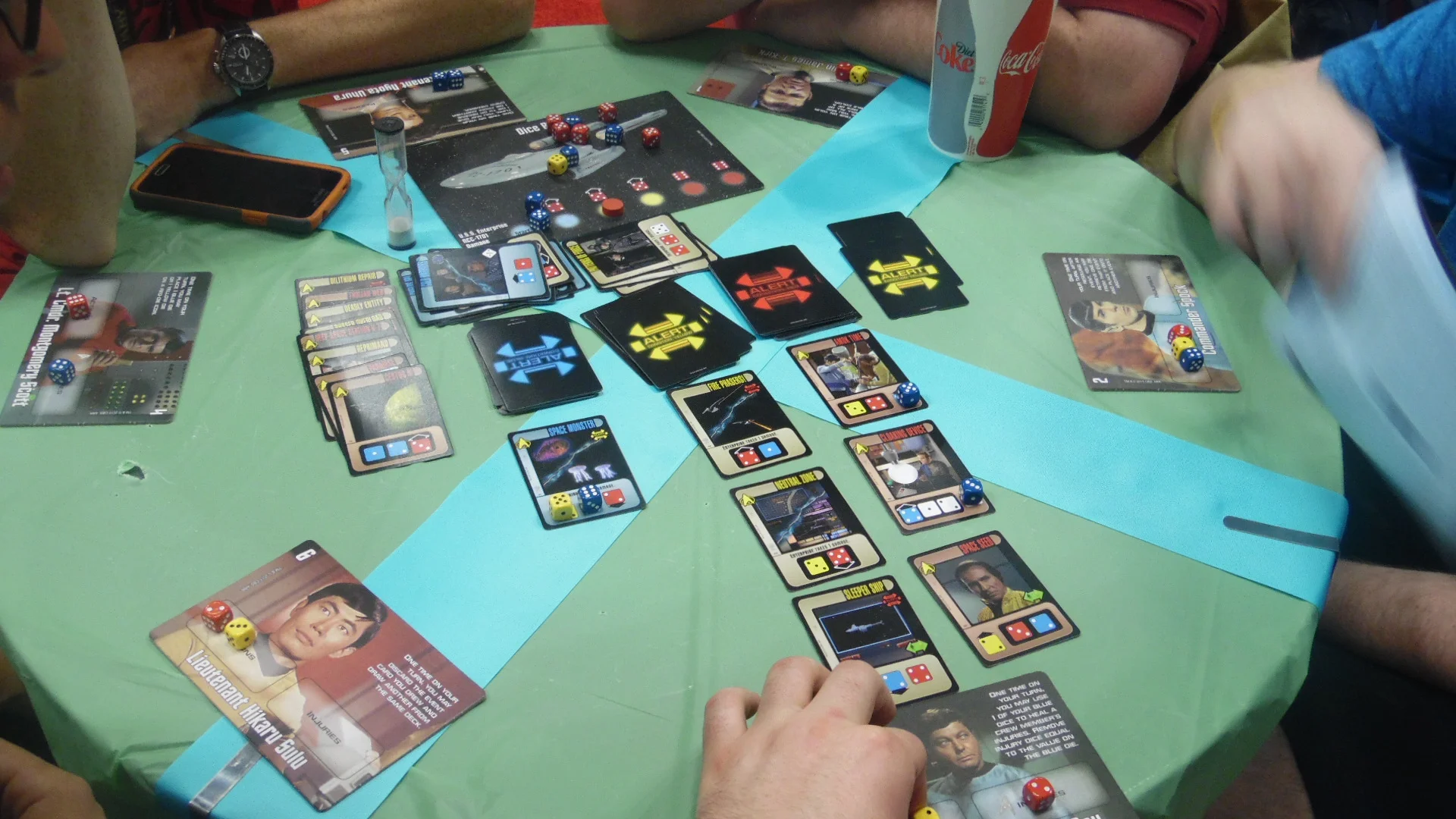
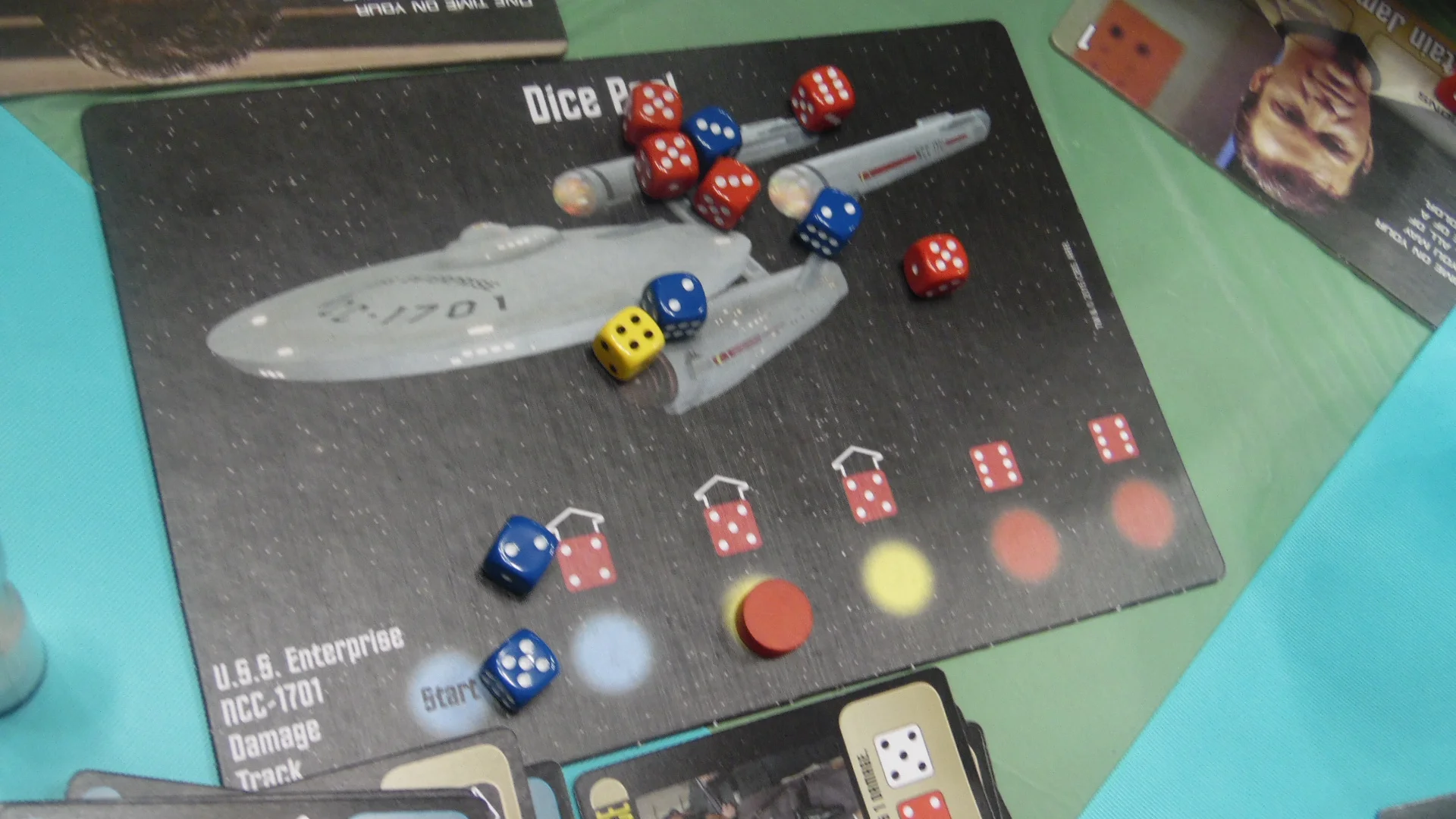
Impression:
I played as Scotty in our session and came with the ability to turn any of my colored dice into red dice. This played into my character as the only way the Enterprise could be repaired throughout the game was with red dice. Other characters like McCoy could use a dice to heal injured players (which would result in lost dice) and this personal touch was probably one of my favorite parts of the game.
The game started off simply enough. Occasionally we would hit a snag as some cards came coupled with special instructions like "no player may communicate until this card's combo is completed." There are also prime directive cards that require you to complete them before moving to other cards on the board or the card becomes an instant fail. Then some cards damaged the Enterprise upon drawing...etc. etc. It was a lot to take in.
That being said, it was perfect for a co-op game. One of my friends made the comment that he typically doesn't like co-op board games because he feels no real difference between discussing each turn among the group as opposed to just sitting back and letting them hash it out. The amount of things happening simultaneously in this game ensured that all six of us were actively engaged in the process...especially later in the game.
The intensity of the game is real. In fact, our final turn — in which we won — would've ended in a loss had we not thought long and hard about our final move.
I'm not one for role-play, but the cooperative experience and tough situations to talk through lent itself to some goofiness along the way...and the social aspect is really what co-op is all about.
4. Elysium
Publisher: Asmodee/Space Cowboys
What Is It?: A very complex competitive card/set making game.
General rules:
- Players start with four pillars, a number corresponding to turn, and gold and victory points corresponding to their numbers.
- Each round, nine cards are dealt to the board. Players then spend their turns sacrificing pillars to purchase quests or hero cards.
- Quests determine your turn order and come with various beginning of turn bonuses of gold or victory points. Each card and quest has instructions which you can purchase. For example, if you want a card with a blue pillar on it, you must have your blue pillar actively in play at time of purchase. You can even use your blue pillar to purchase that card. The round ends when each character has exhausted all their pillars for purchasing at the end of the turn.
- Each card also has a number (1-3) and unique abilities that can be used instantly, at will, or once a turn when they are above your board.
- At the end of the round, each player may choose to spend gold to move their purchased cards to their "Elysium" to attempt to score points. Players score points by either creating a numerical set of the same color cards, or the same number across different colors. Cards lose their special abilities when placed in the Elysium.
- Game ends after five rounds.
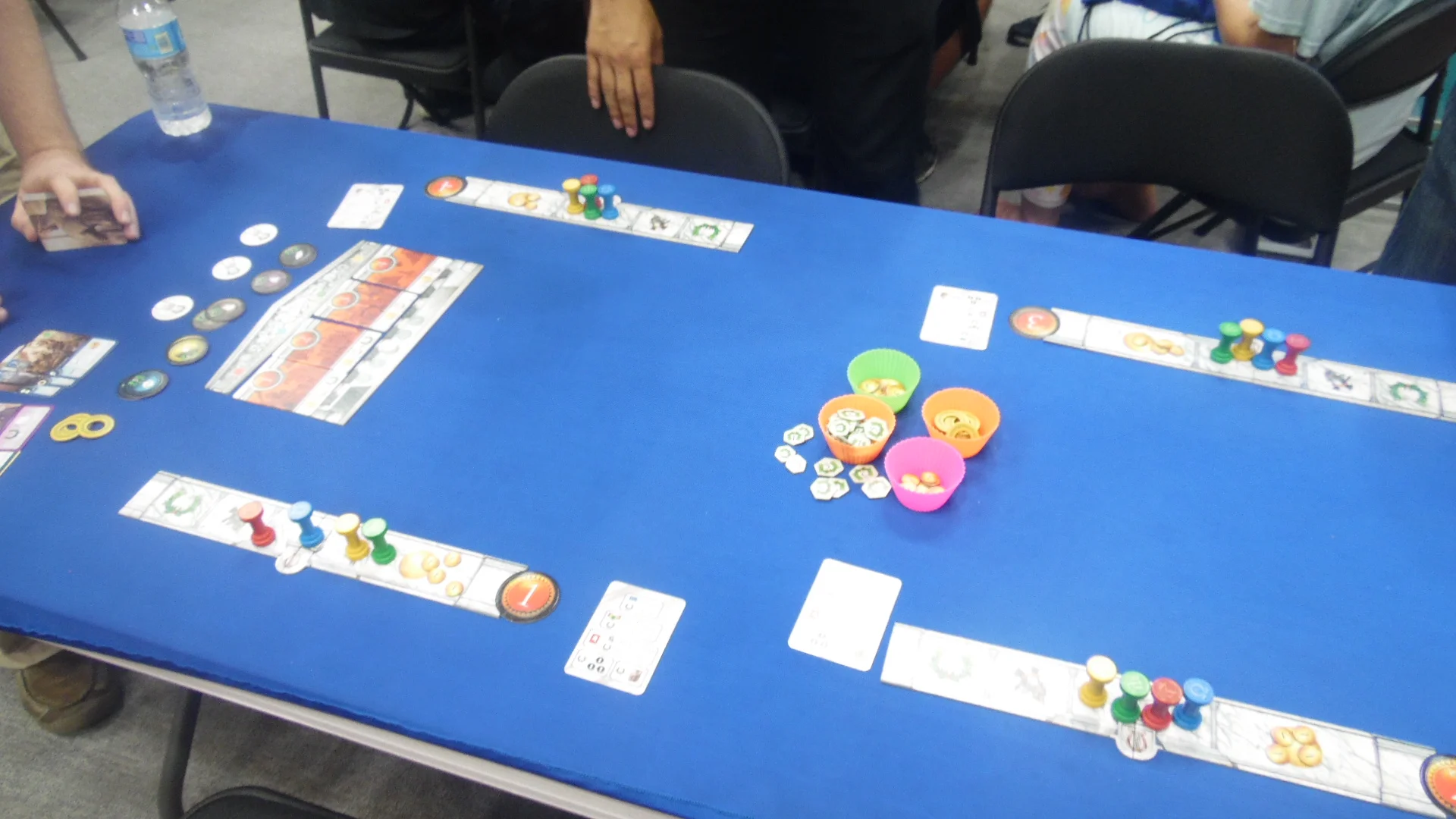
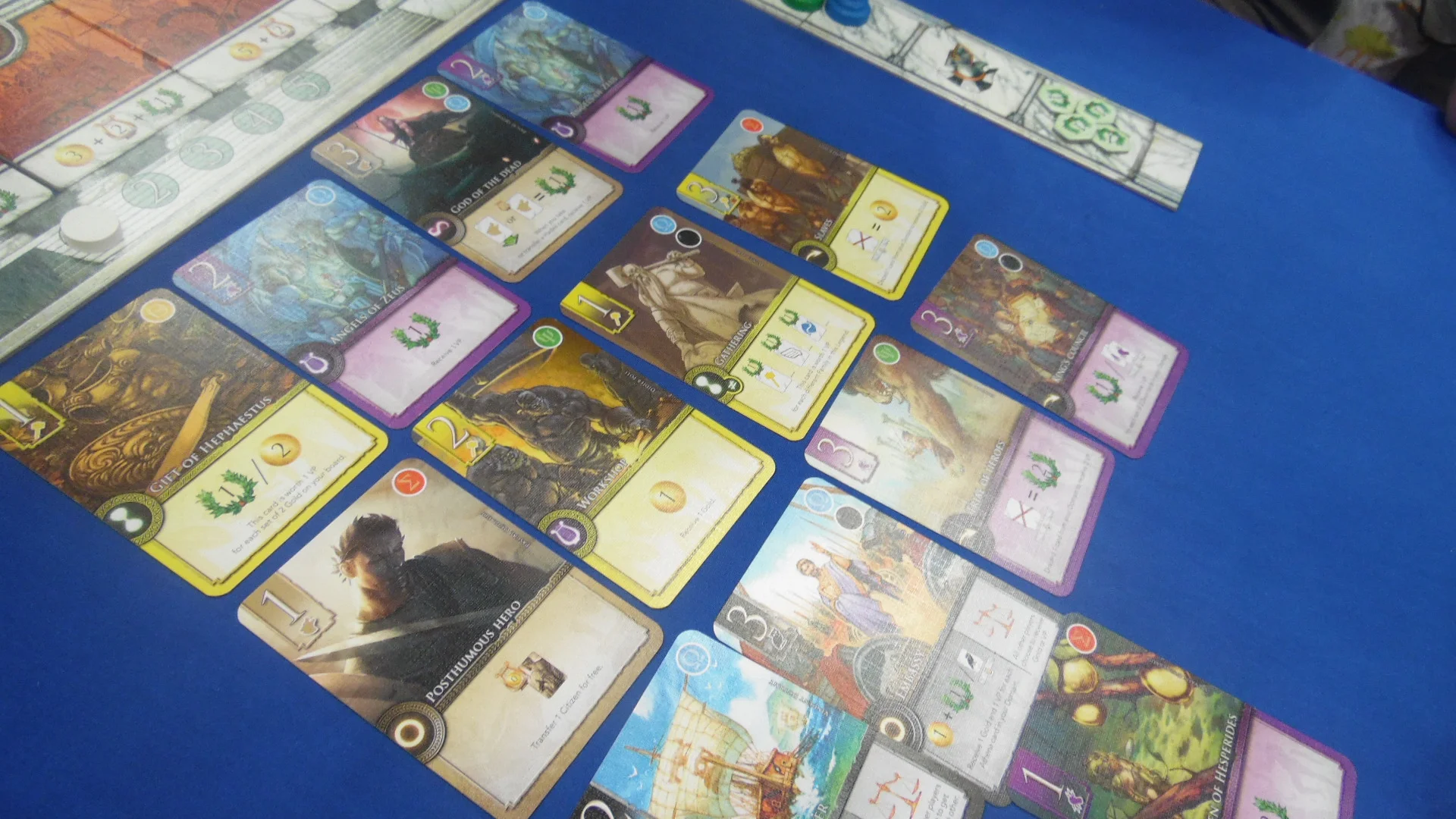
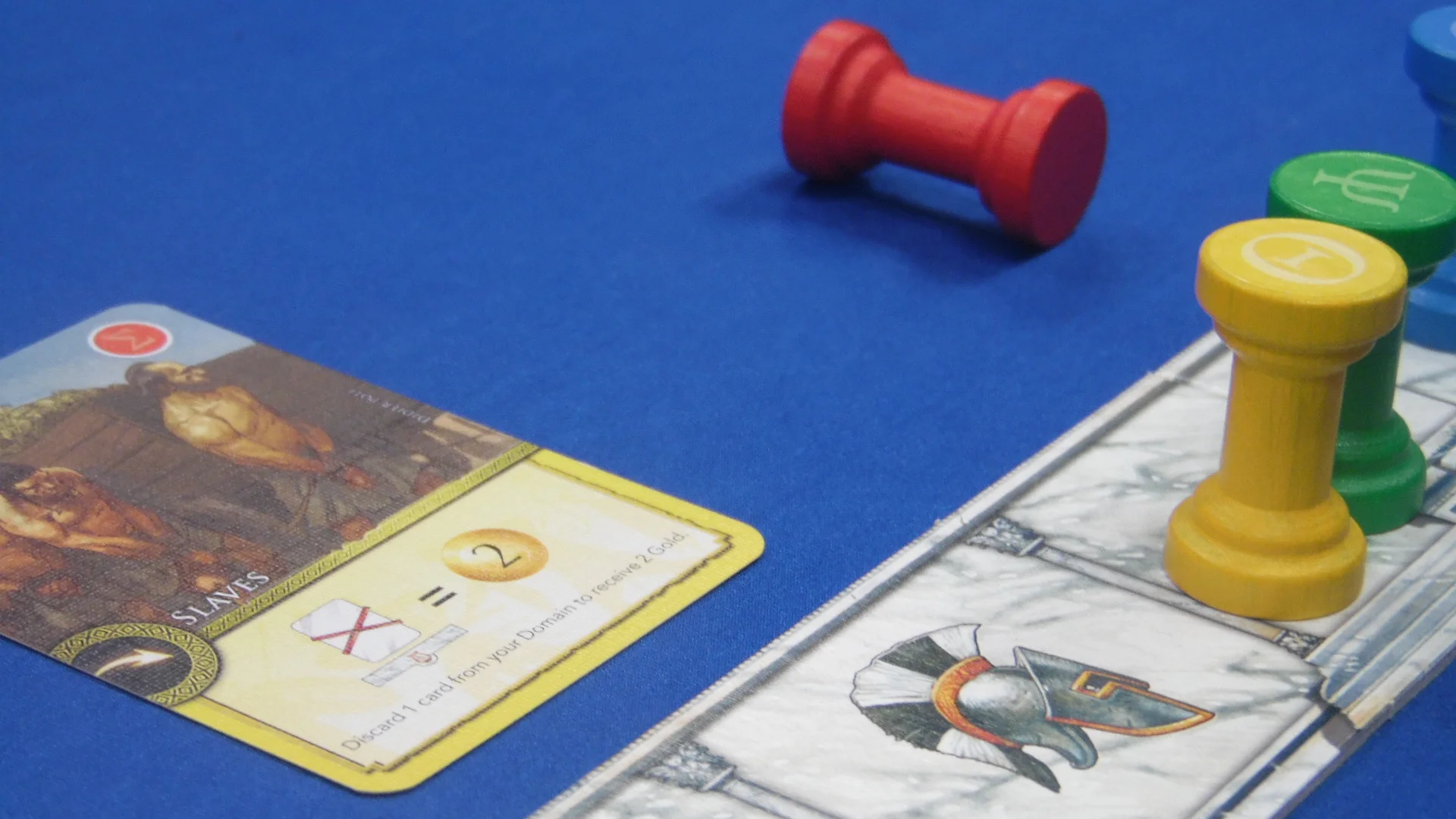
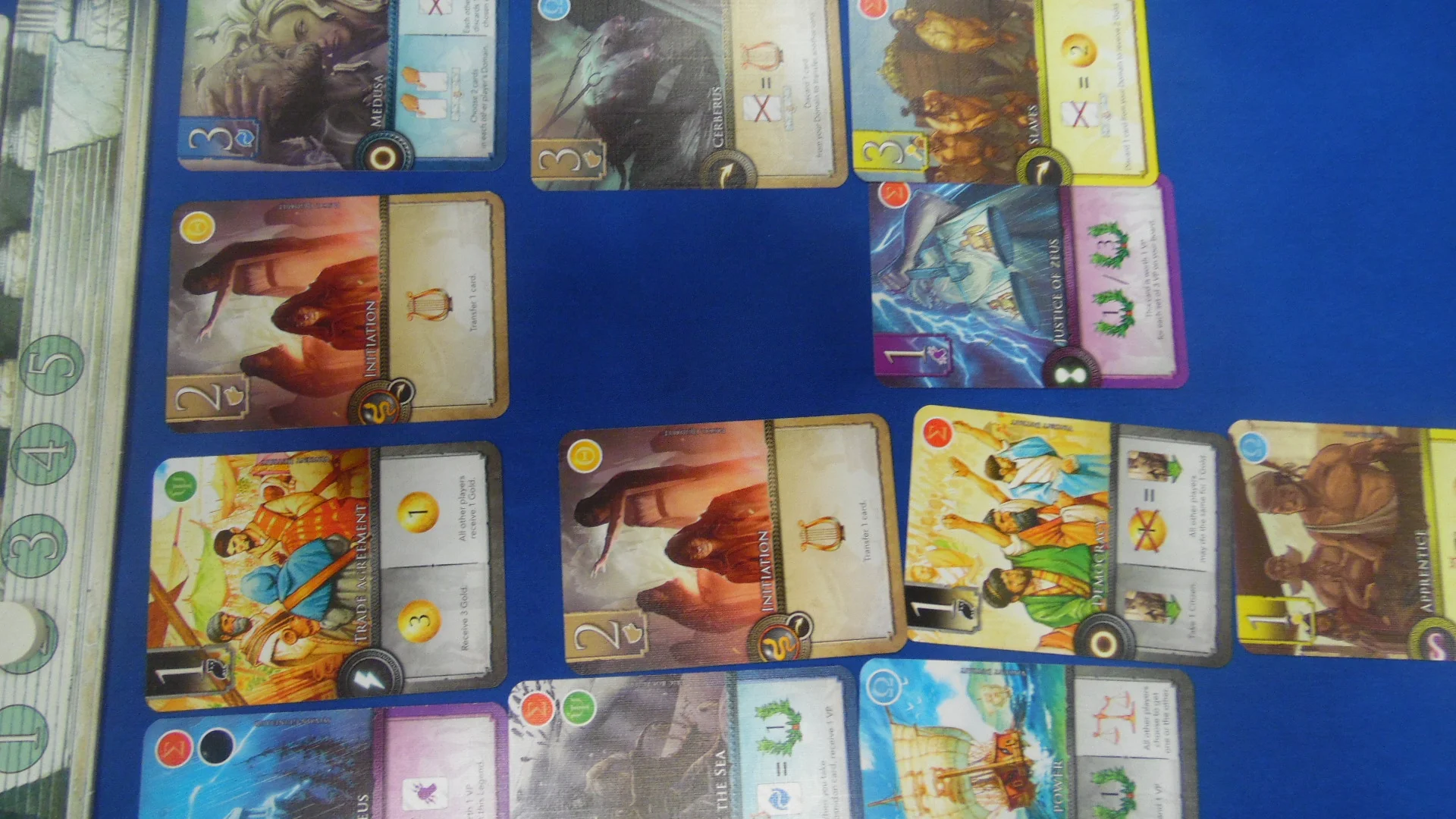
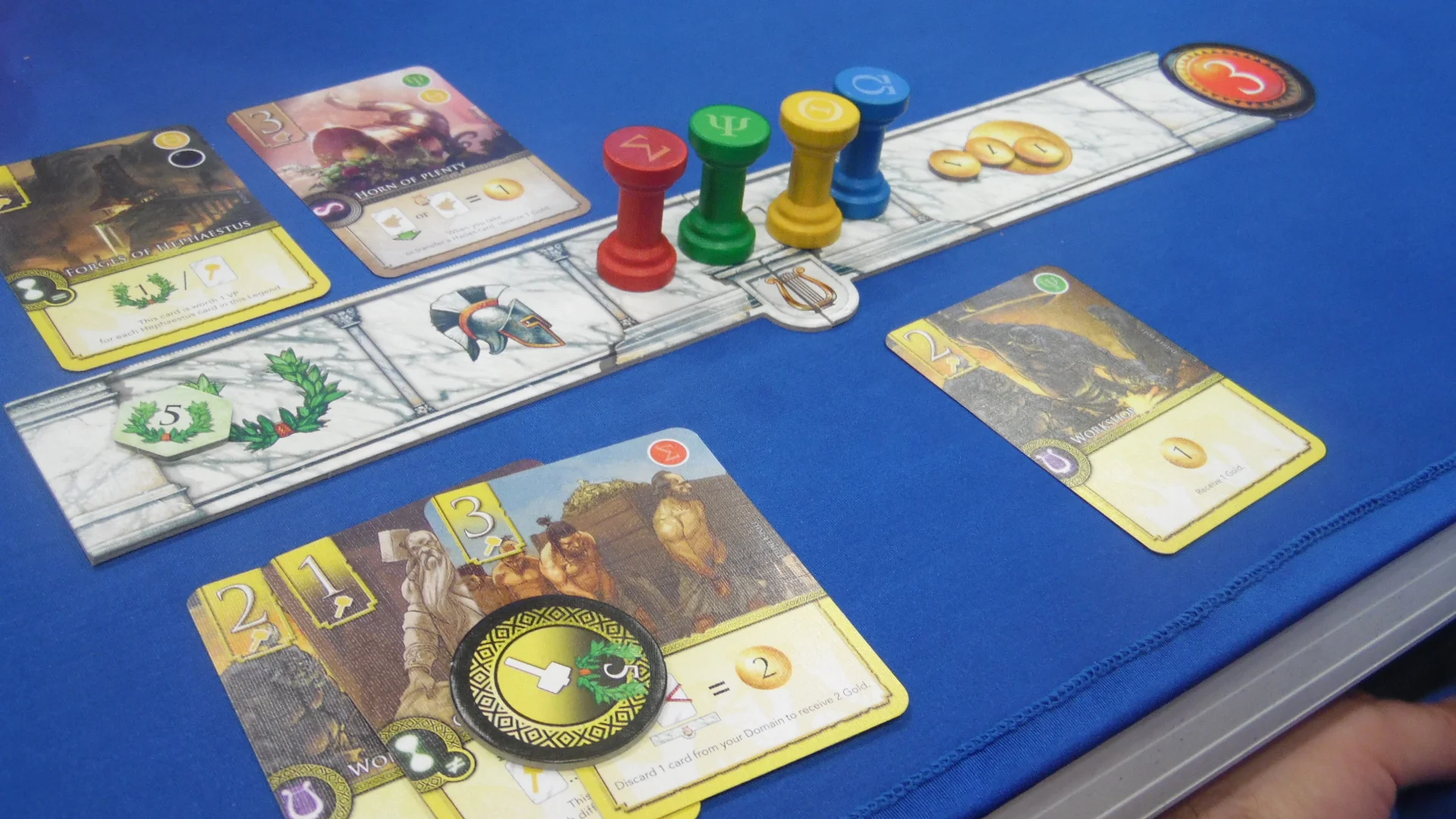
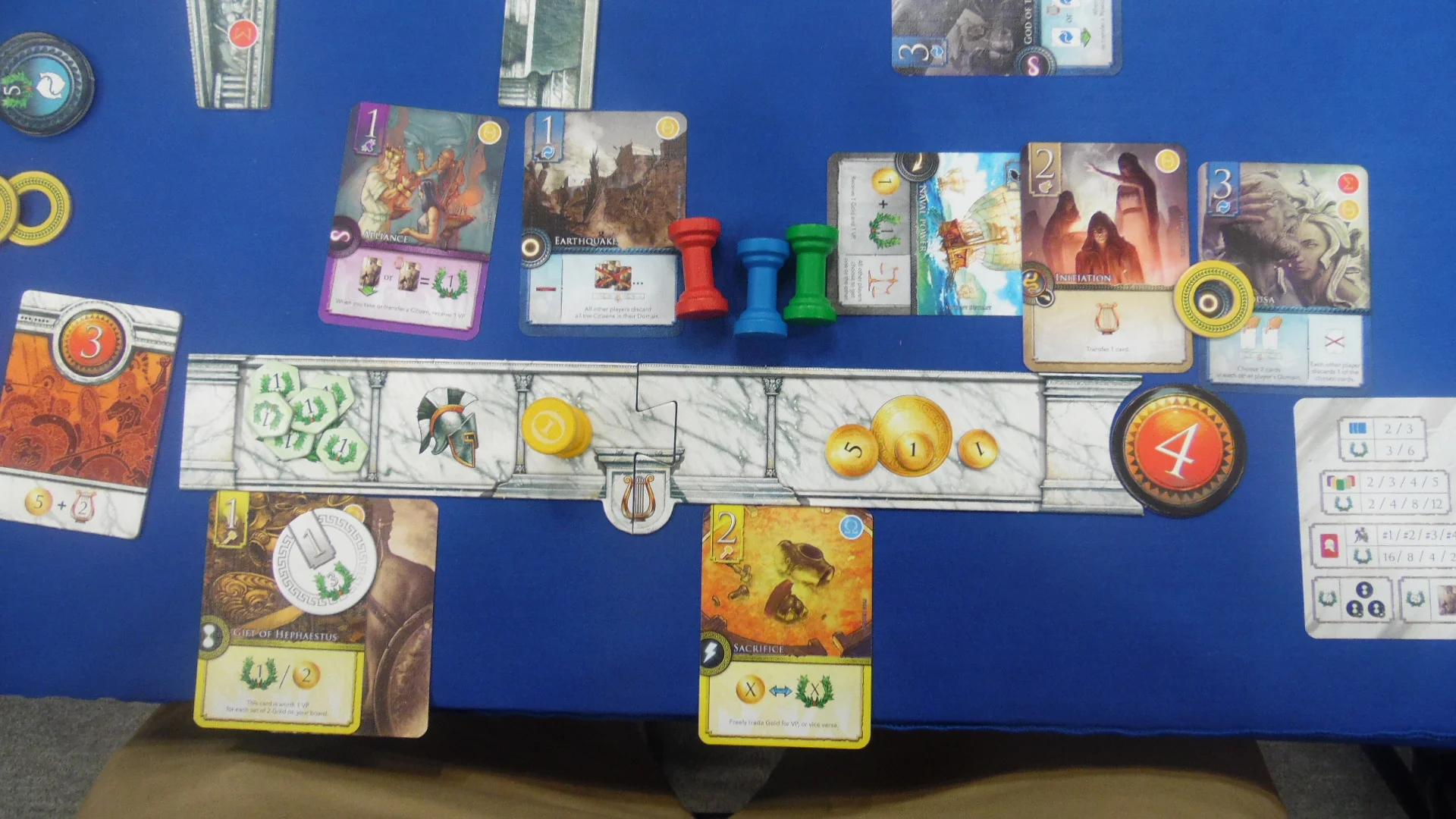
Impressions:
Holy s*** is this game complex. For those familiar with the Spiel Des Jahres, this one was a runner up in the Kinderspiel, which is reserved for games that come with a bit of a learning curve. As our game guide said to us, "the first game of Elysium is typically a practice round." Our "practice round" lasted well over an hour and we made it through 3 rounds before the demo was over.
This is a game where you have to start with a strategy, or you'll realize you've already lost midway through. You spend your time waiting for your turn, analyzing what card you are going to purchase, and thinking forward to the next move when suddenly your card is taken and you're back to the drawing board. All the while you're watching the quests and making sure players aren't buying up their next turn and ultimately screwing you out of a turn you can't purchase because you spent that column. Basically it comes with a huge penalty if you do...I'm not sure what...there was a lot to keep up with.
One thing that I absolutely loved was that each color corresponded to a God and each God's card was designed by a separate artist. Out of 8 Gods, this lead to a really colorful board that was very visually appealing.
Out of all the games on the list, this was the one all my friends loved and I was not so high on. The game was fun for me, but would have been more fun if I had fully understood how to play at the start, and frankly, it's a game you play with guys who love games and who've also played the game before. With experienced veterans, I see this becoming many peoples' top game...for beginners, it'll take a bit to grow on you.
3. Medieval Academy
Publisher: iello
What Is It?: Turn based board/card game
General Rules:
- Each player is dealt six cards at the beginning of each turn.
- Players then use their cards to move across six game boards. Each player has a game piece at the starting line of each board. Each board corresponds to a different aspect of being a hero.
- Each card has a corresponding number (indicating number of spaces to move) along with which board you can move your game piece on when playing.
- After all but one card from each player have been laid down, players discard their final card and review the boards. Players are awarded different points depending on which position they are on the board. The player in first, second, and third typically get rewards while the rest are ignored; if multiple players share a position, then they are both given the corresponding position award.
- The game lasts five rounds. The player with the most hero points at the end wins!
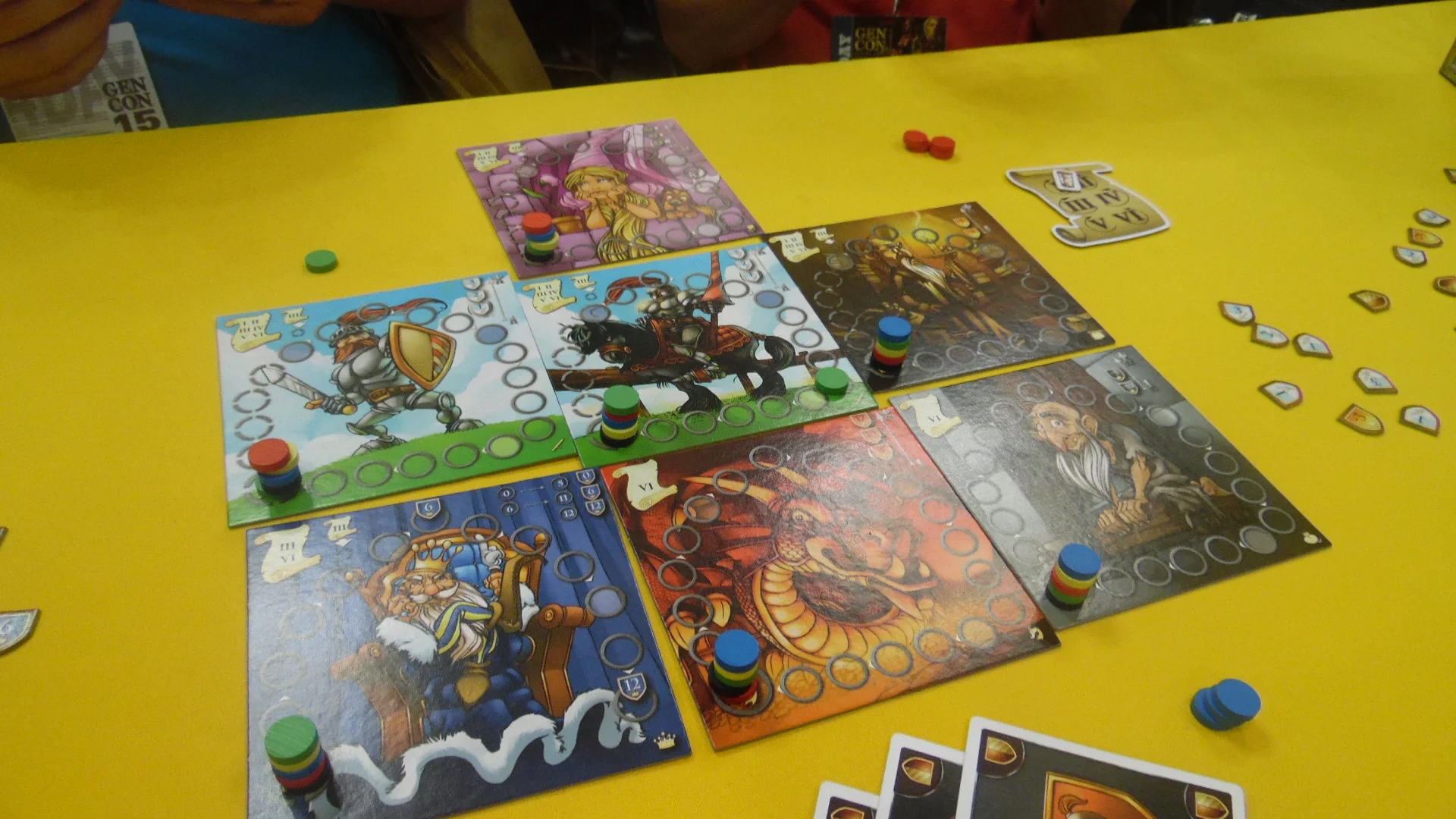
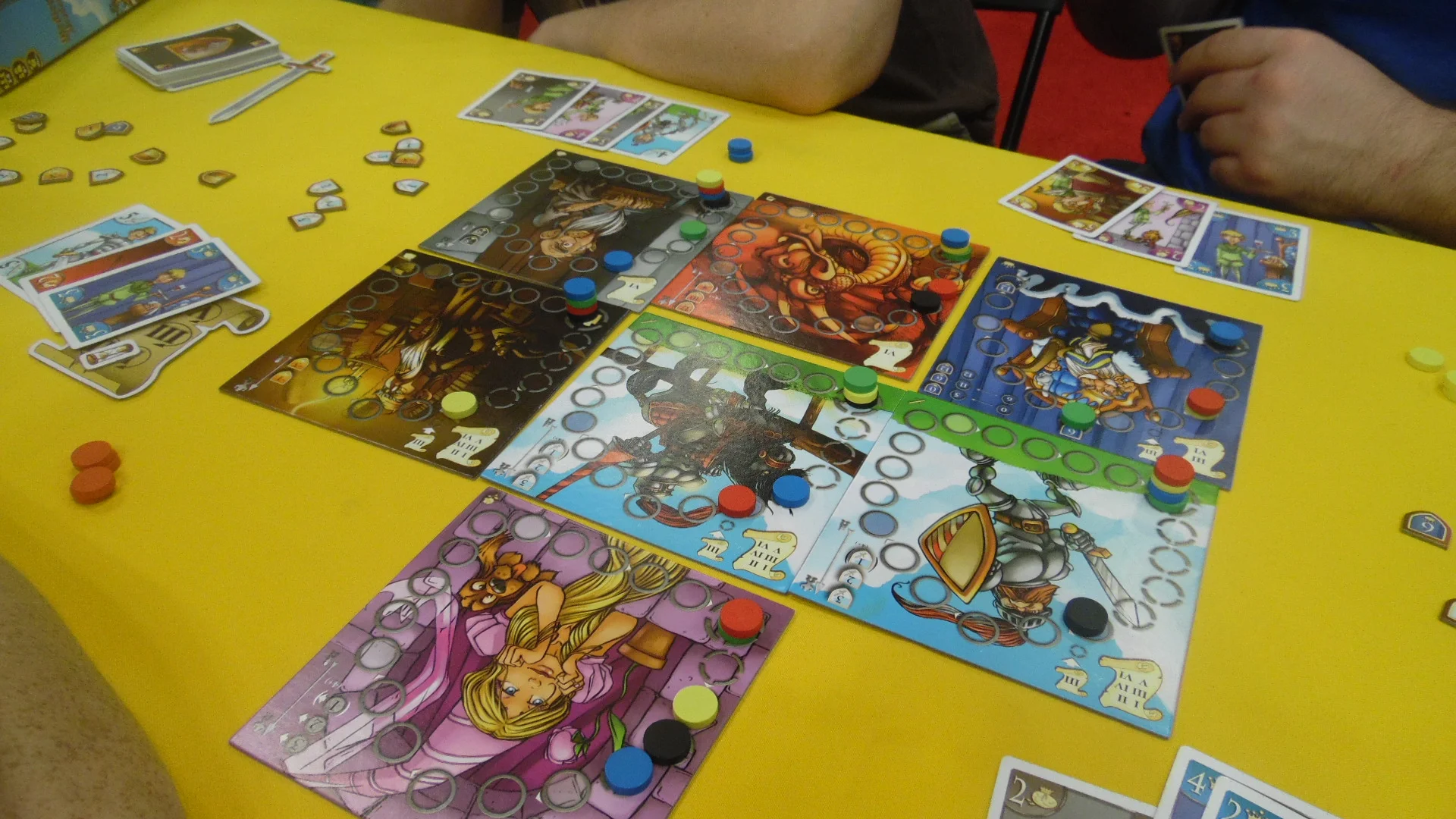
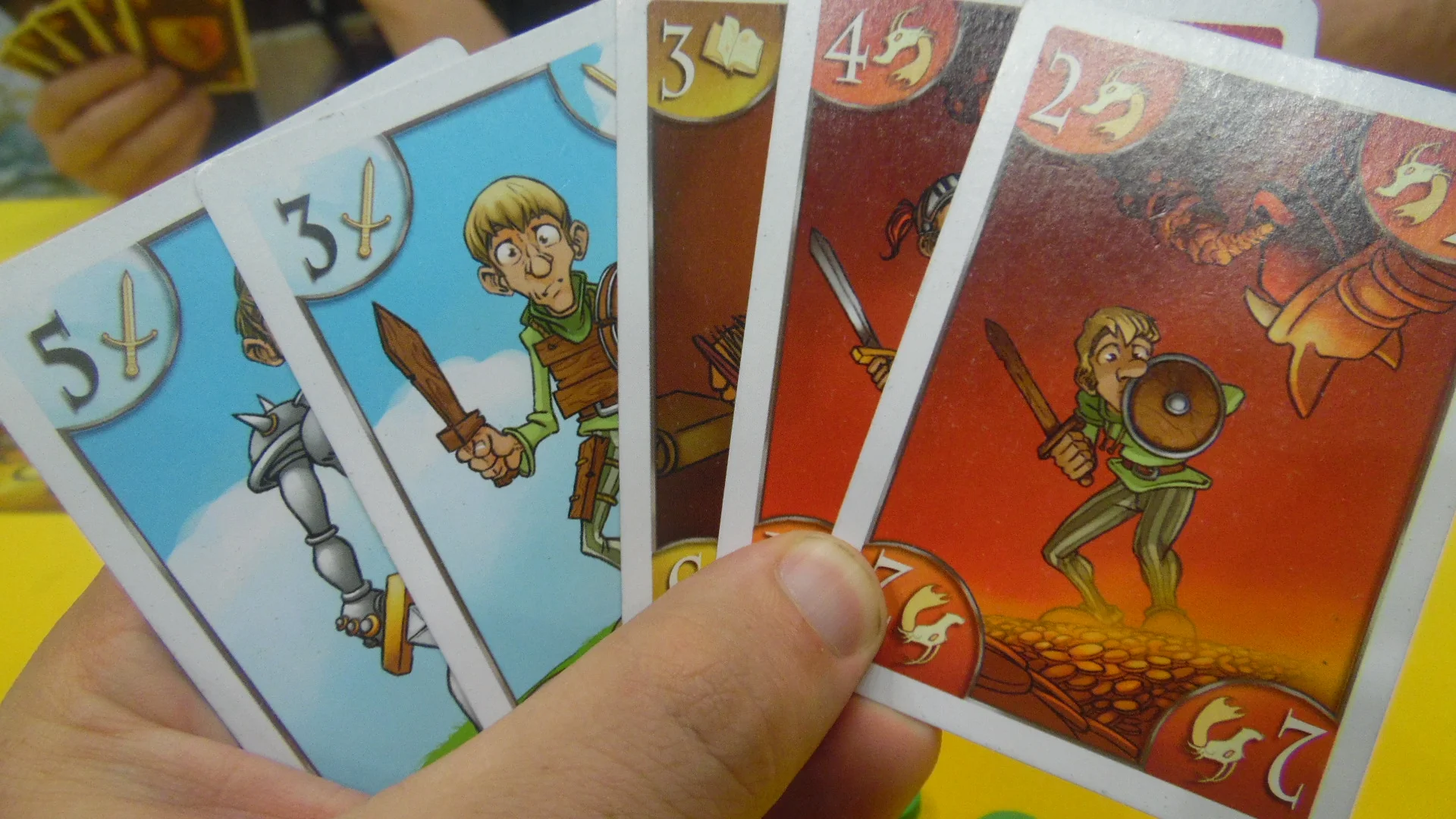
Notably this game is a favorite for next year's Spiel Des Jahres. It's remarkably fun even though there's really not a lot of control to it compared to other games. The lack of being able to freely use your drawn cards on whichever board you wish, while limiting the board breaking ability to aggro points on the highest scoring board also makes things a little more luck than anything.
All that said, we had a lot of fun playing this game and in terms of family fun, this one is a simple learn for all ages. I won't be surprised if I do see it getting a Spiel nomination.
You may be wondering why this game is so high on the list if I was a little more harsh on it than others. At a price point of around $25 online it's the cheapest on the list and about the price an average family would allot towards a family board game. I think that's more important than anything.
2. RYU
Publisher: Asmodee
What Is It?: Game of lot/bluffing/building/race
General Rules:
- Each team is trying to build a dragon and does so using different colored blocks as indicated by their player screen. The screen is used to hide your blocks from other players seeing.
- Each team begins its turn with the option to move two turns in either direction and explore, forgo exploring and move four spots, or pass and receive a yellow block for exploring.
- When players land on another player's island, they can explore it to gain more bricks for building their dragon. The player then flips a game coin to decide which blocks will be randomly drawn.
- If the player gets a four, then four blocks are drawn. The first block is chosen by the person exploring, the player being explored then picks two, and the person exploring gets the final block. If the coin lands on five, the player being explored divides the blocks into either three and two or four and one. The explorer then picks between the two and the other player gets what remains.
- Once an island has been explored, it cannot be explored again by any player until four islands have been explored...then all islands reset.
- If a white "dragon tear" block is revealed/taken, then the bidding phase begins. Players then may bid blocks in their possession for the ability to build one of their dragon parts instantly. The player who bets the most blocks wins the right, and the losing bidders get to take tokens in return for their sacrificed blocks.
- Merchant tokens can be used to buy governor's tokens, which count for any color block...and smuggler's tokens can be used to wipe out opposing players' blocks behind their screen down to four.
- The player who completes all five parts of their dragons first wins! Everyone else loses...no second place.
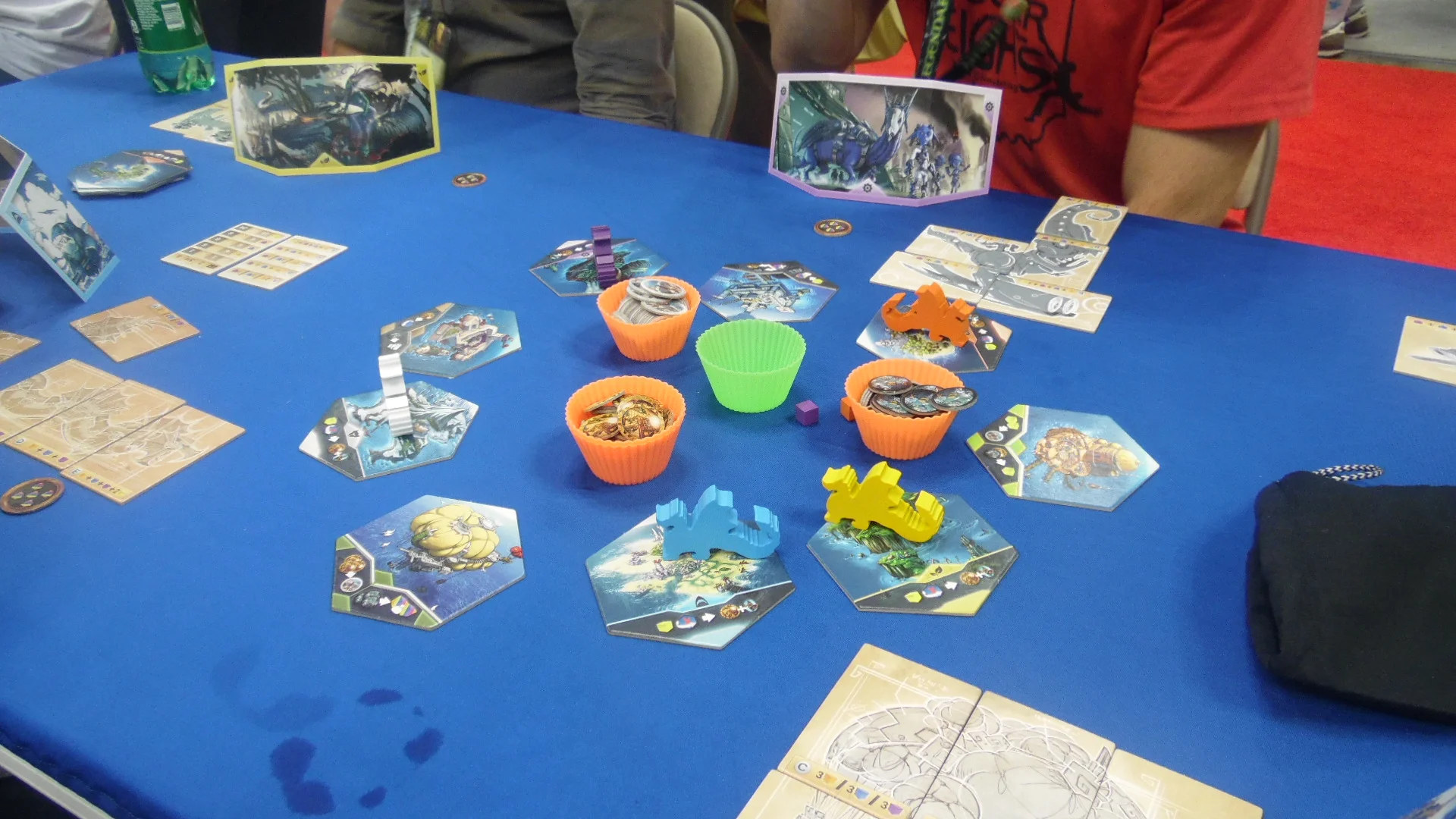
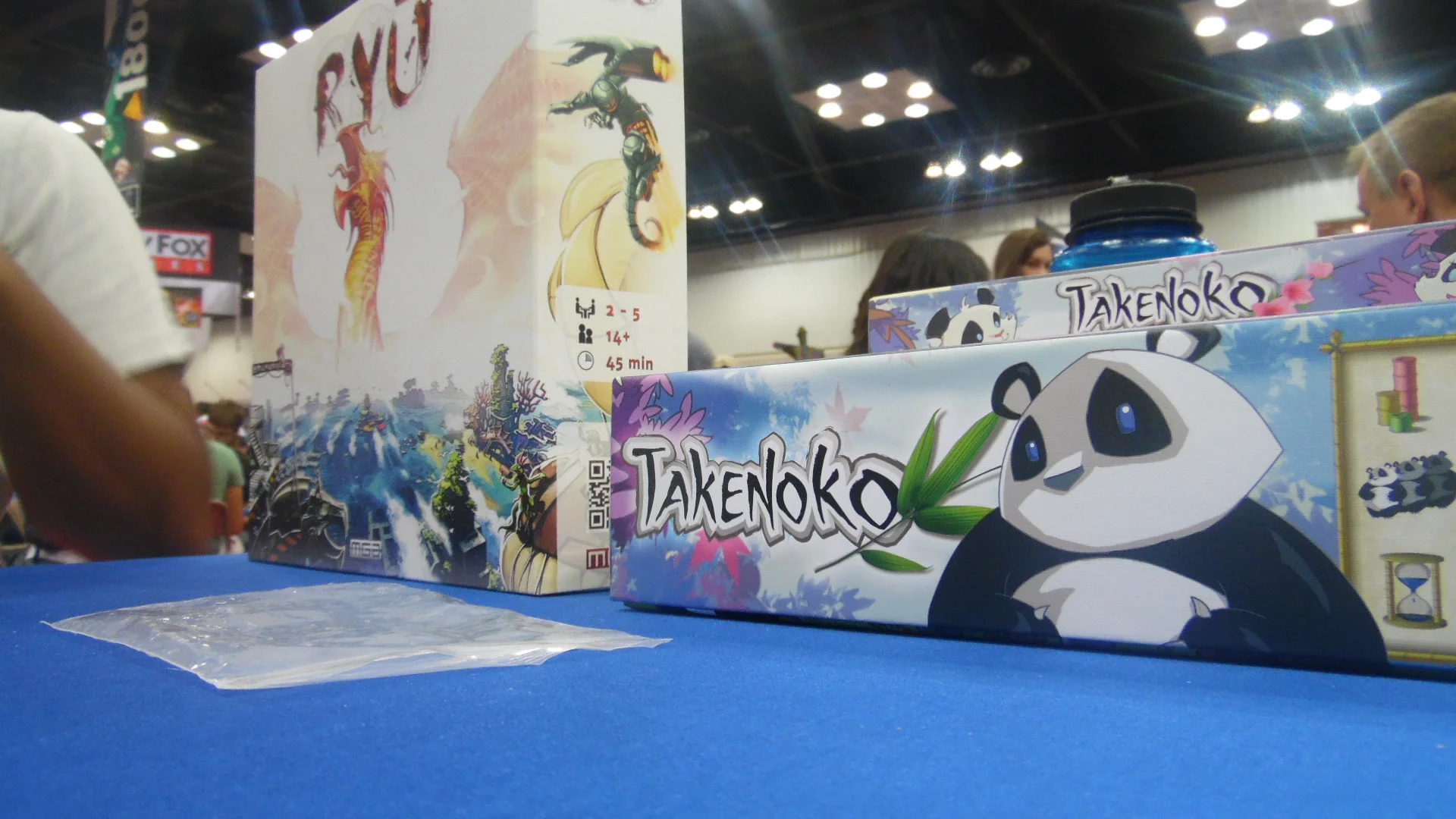
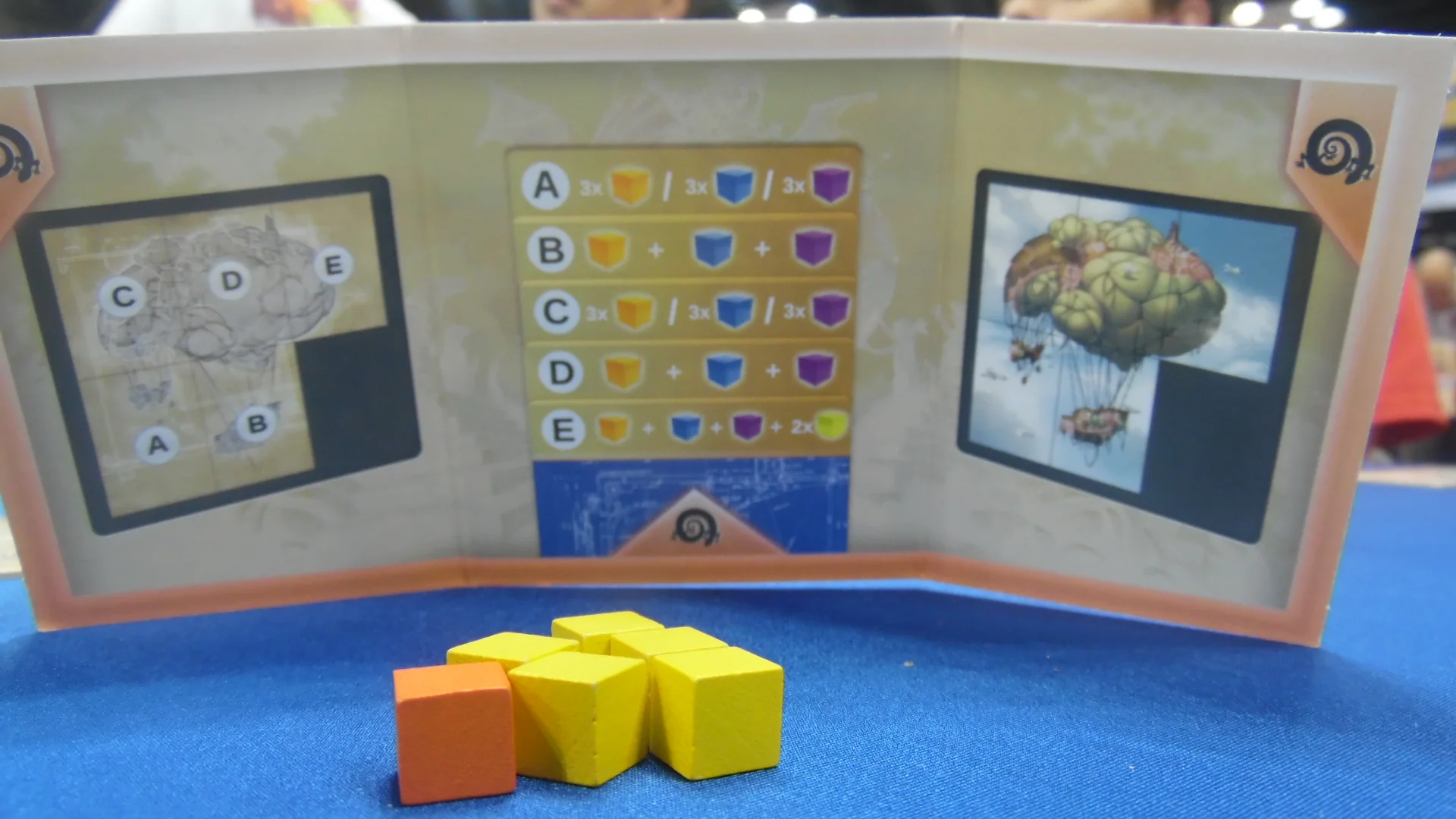
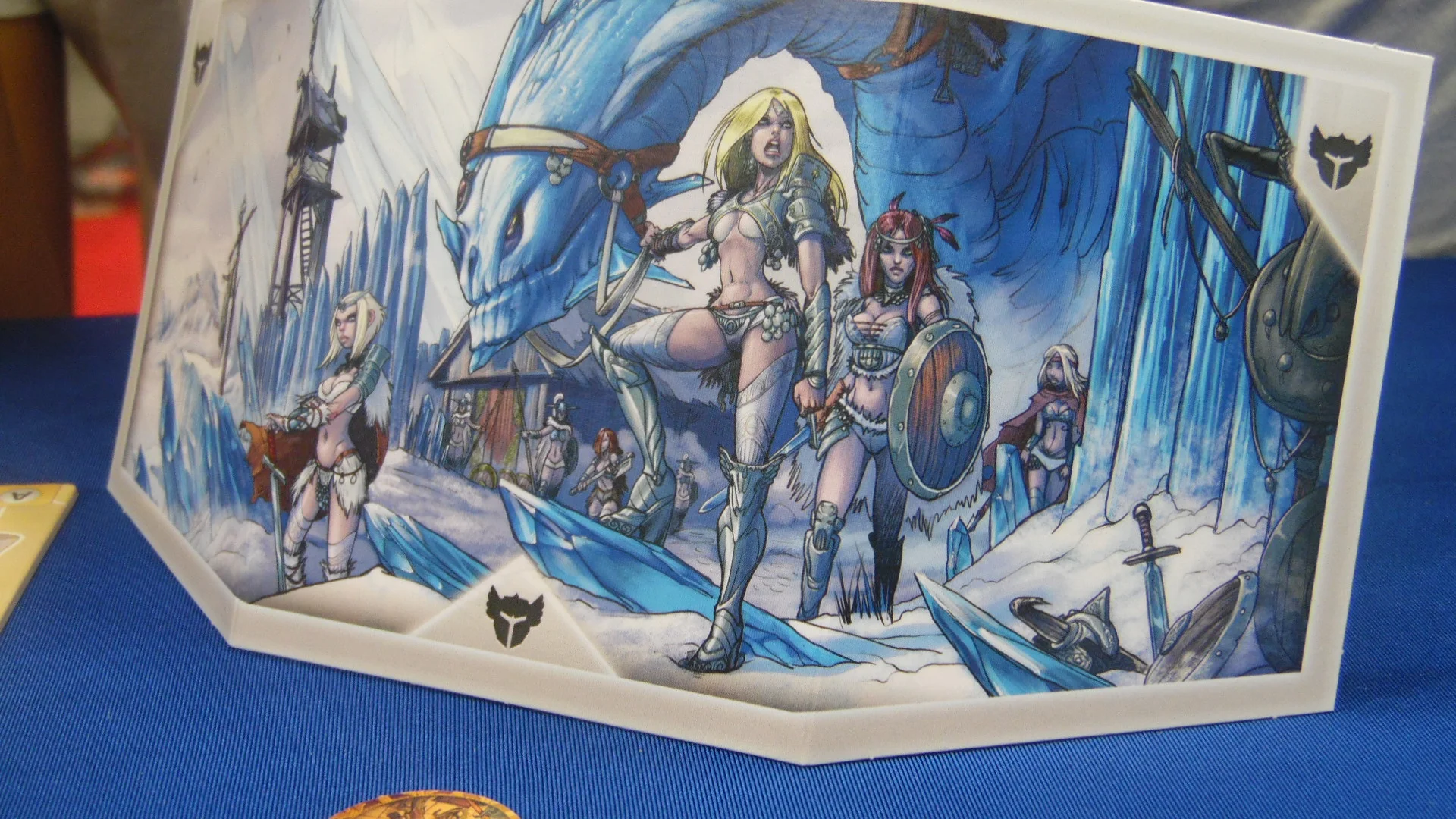
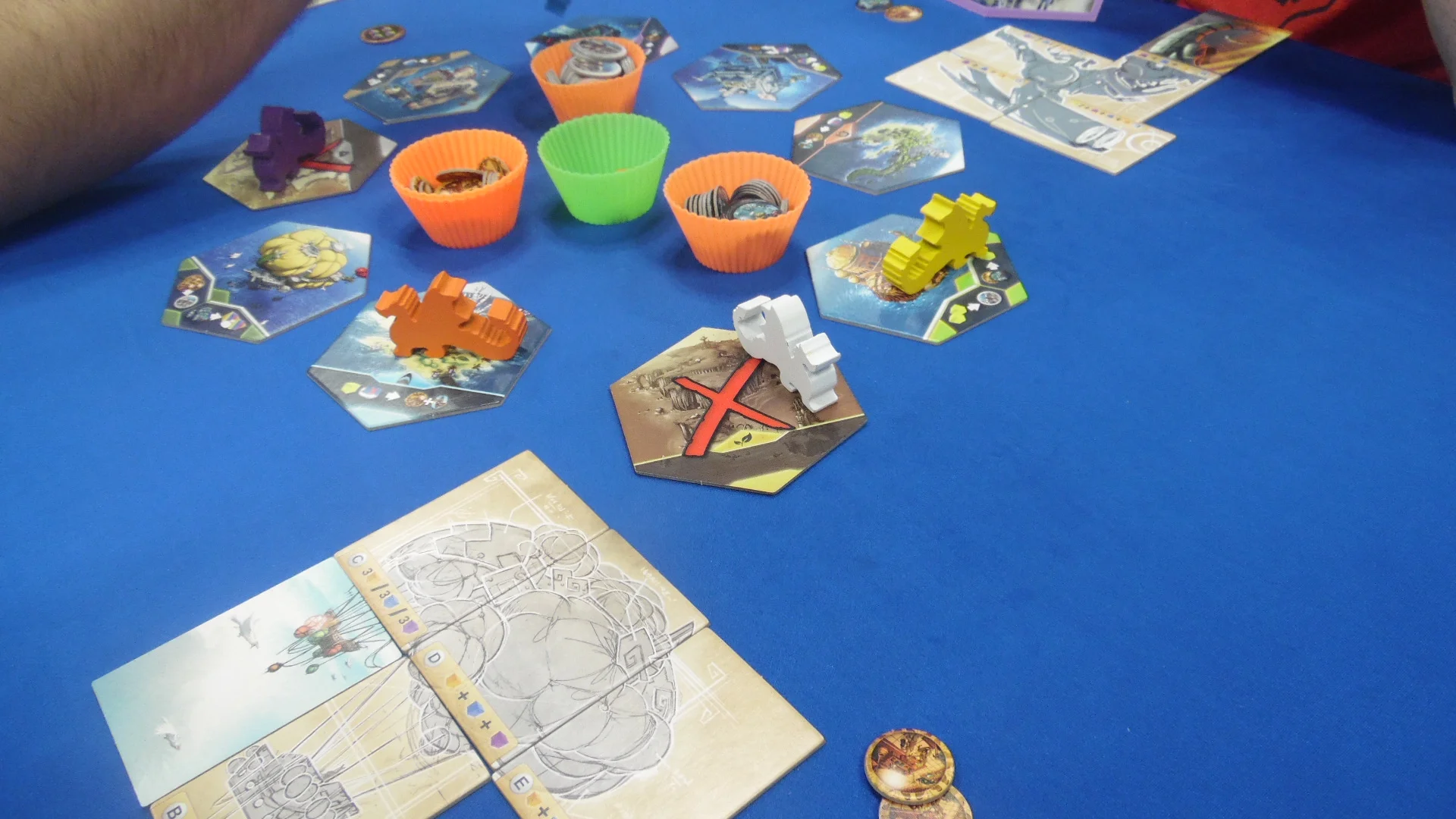
There's a lot to love about this Korean-made game. The story captivated me more than all others we demoed. The God of Dragons RYU is coming to the fictional world...and each nation is racing to build the greatest monument to him in their image, in hopes RYU will reside in their nation. The variety and artwork for each nation was awesome. Goblins, Reptilian, shark people races...it was all so cool to imagine, it stuck with me round to round as I imagined my Reptilian people making my dragon.
For a game with zero combat, there was a lot of intensity between turns. Of course exploration is mutually beneficial, but you also had to be diplomatic in what you allowed the other character to have/not have. Naturally, smuggler tokens were the enemy of the game. One player in particular kept wiping peoples' supplies, and at times my block supply was highest so that really slowed me down. In the end I was a turn away from winning...but neither I nor anyone at my table was watching my other friend who managed to quietly win with little conflict!
It was fast, fun, and once again pushed the social aspect that I love a lot with these games...despite being competitive. This one was being called the sleeper hit of GenCon, and I believe it after playing it.
1. Colt Express
Publisher: Asmodee
What Is It?: Competitive Turn-based/Card/Board Game
General Rules
- Players pick a bandit. Each bandit has unique abilities they can use throughout the game. For example, if there is ever an option to punch and shoot Belle and another character in the same train car...the other person will always be injured and shot as opposed to Belle.
- Each player shuffles their own card deck and draws 6 (Doc draws 7) cards.
- Players then play their cards clockwise choosing to either shoot, punch, move left or right, to the top or bottom of the train car, or loot the cardboard items in each train car.
- Players inside the car who move left or right can move one space, and players on top of the car can move left or right up to three spaces.
- Players can punch other players in the same train car with them and get them to drop their loot. However, players (except one) cannot pick up that loot unless they play a loot card in their sequence. Players can shoot only players in the train car adjacent to them and in their line of sight.
- If a player manages to land all six of their gun shots on players throughout the course of the game, they are awarded 1000 dollars (which is a lot of points)
- At the end of each round something may happen which changes the board...for example, a wire may sweep everyone on top of the train back to the back train car.
- There's a sheriff in the car who can be moved with a card. The sheriff can take all a player's loot if they find themselves in the same car with him...which obviously is bad.
- The player with the most money at the end wins.
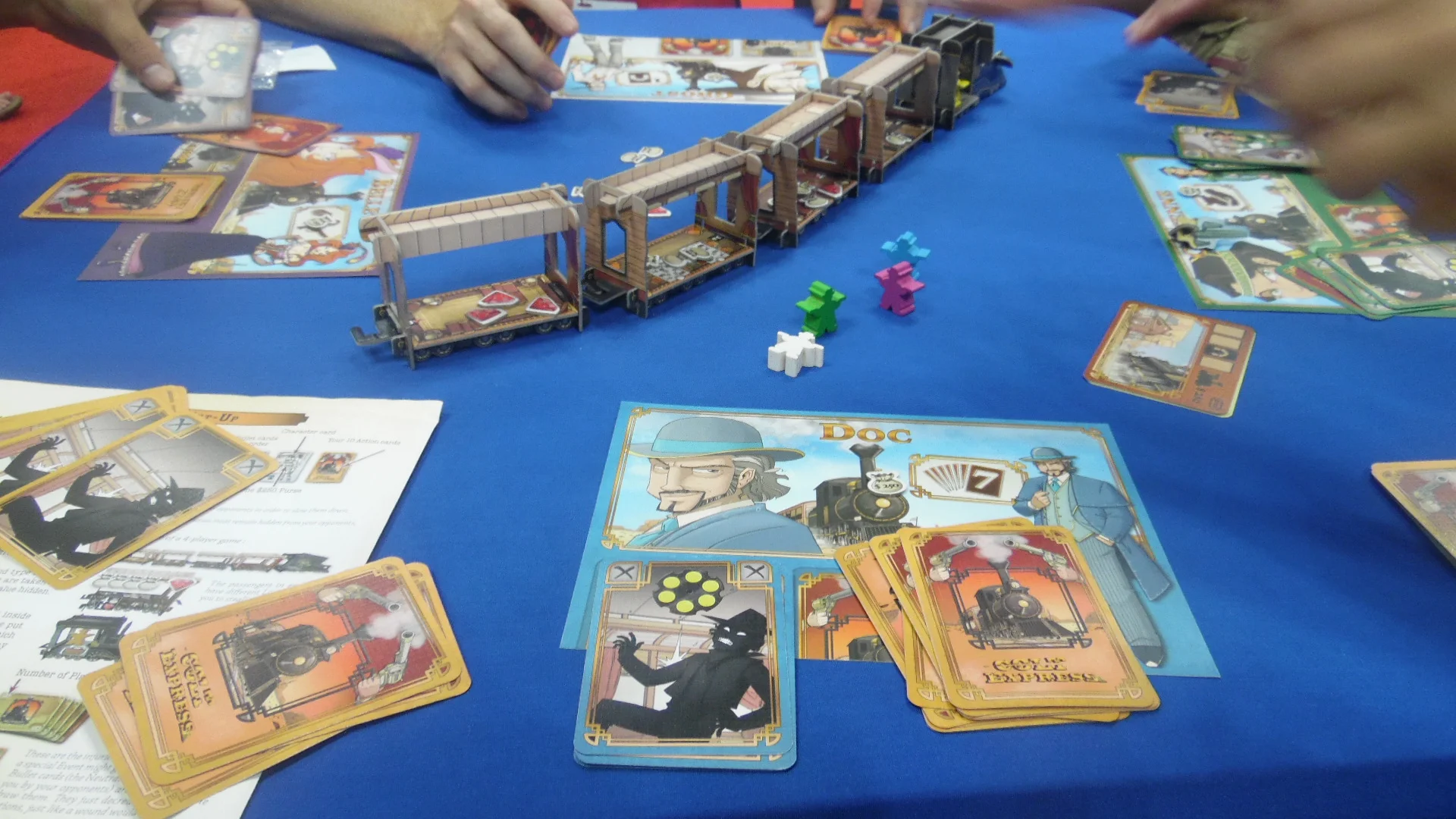
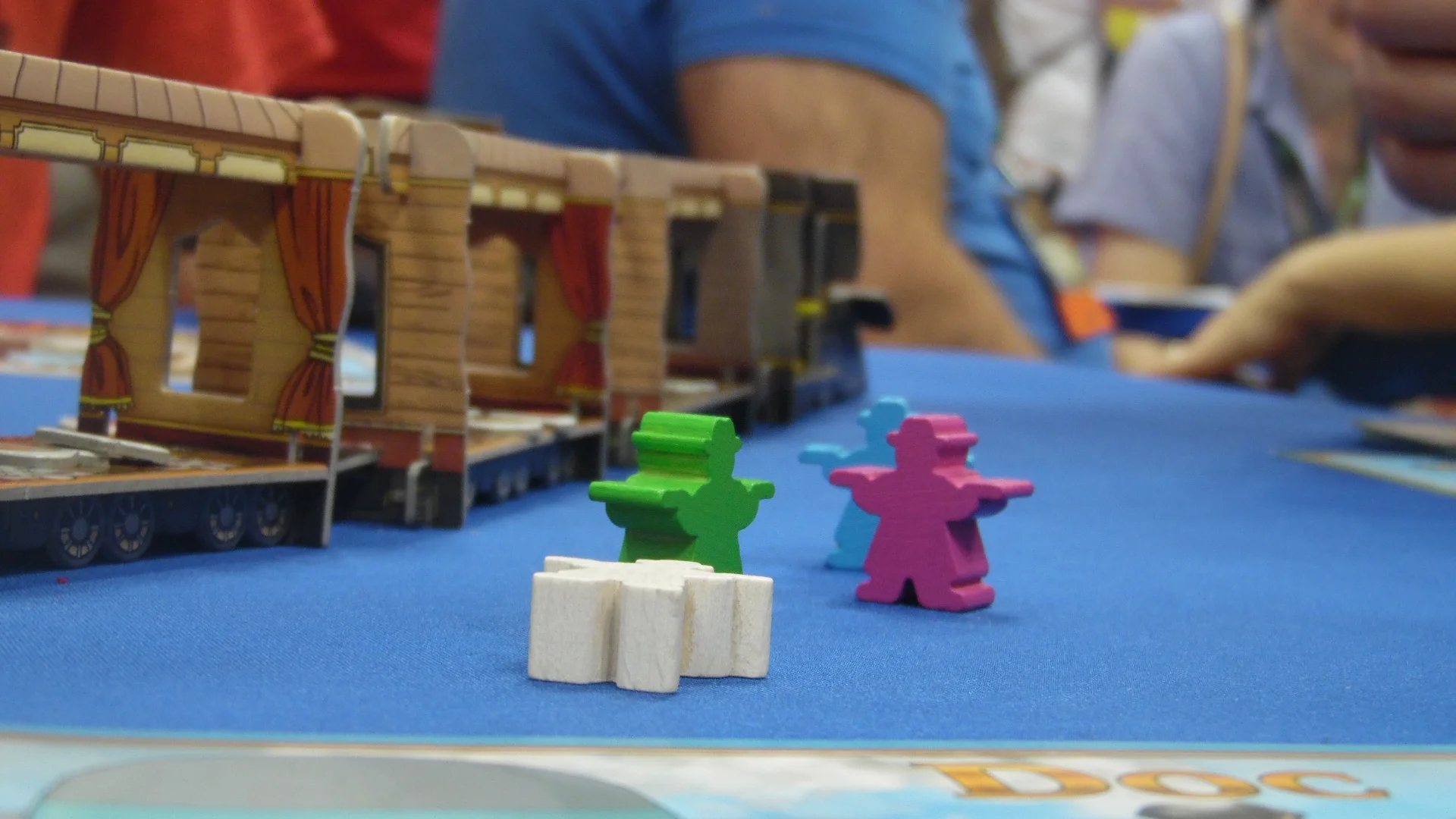
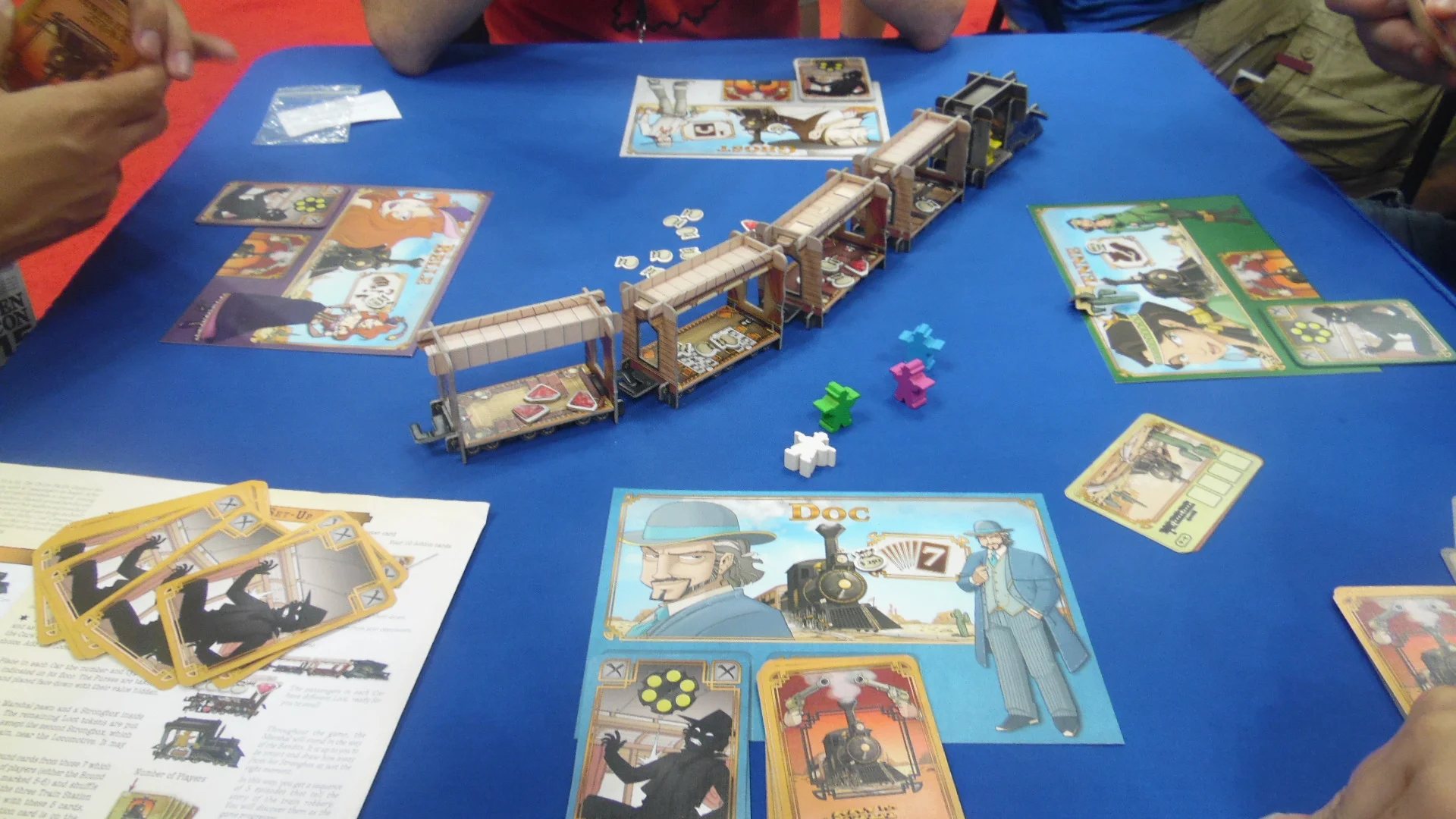
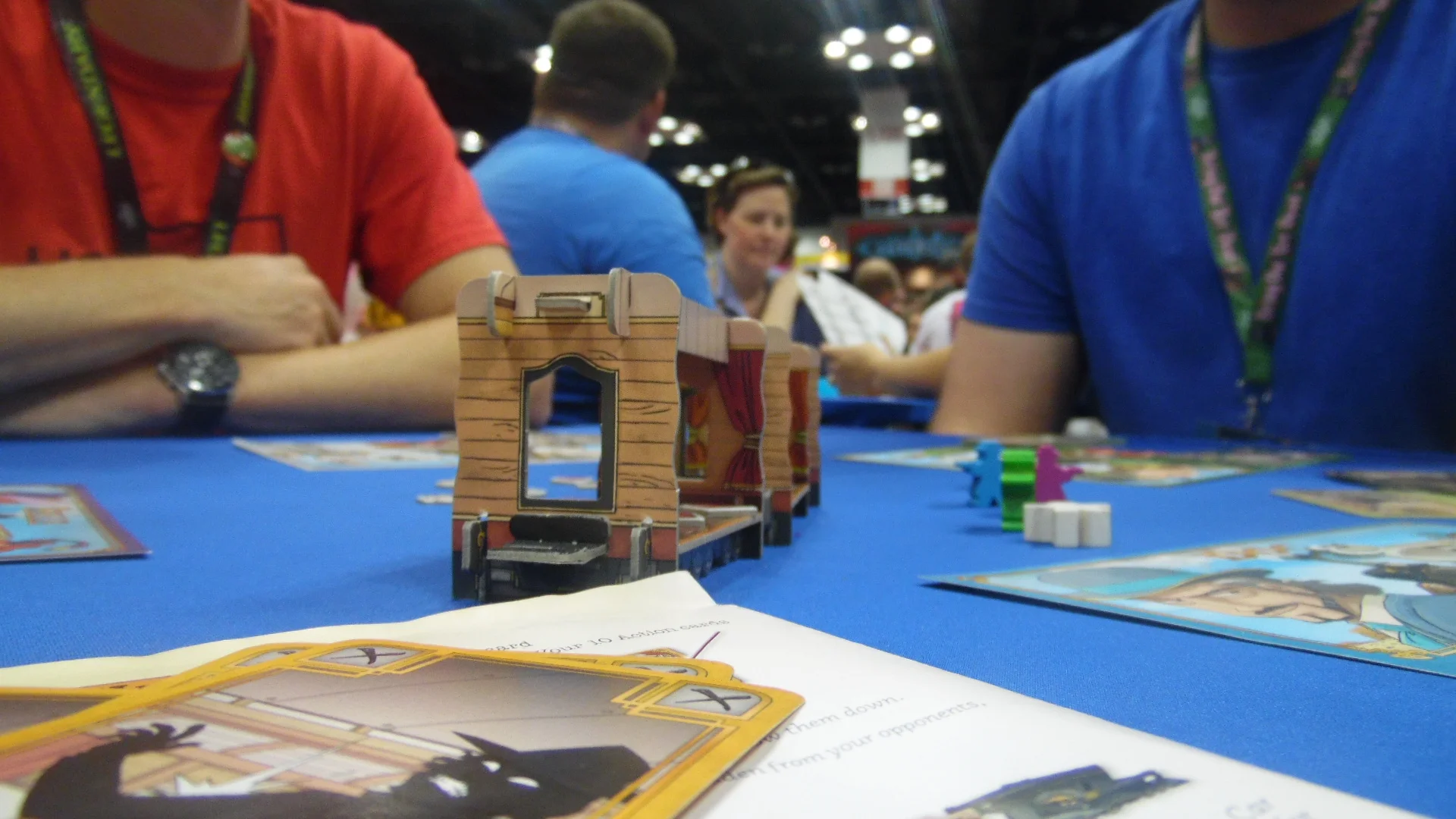
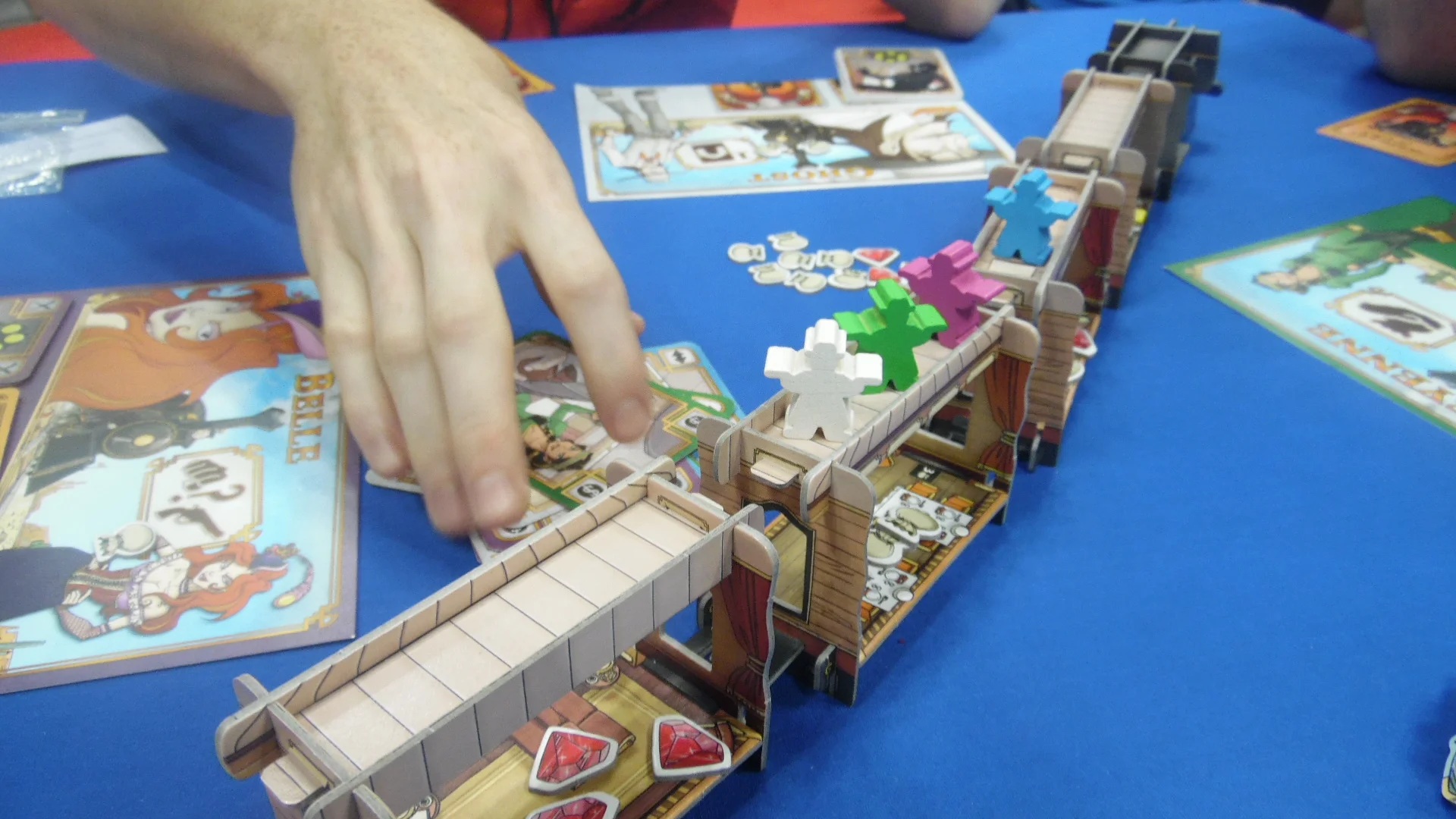
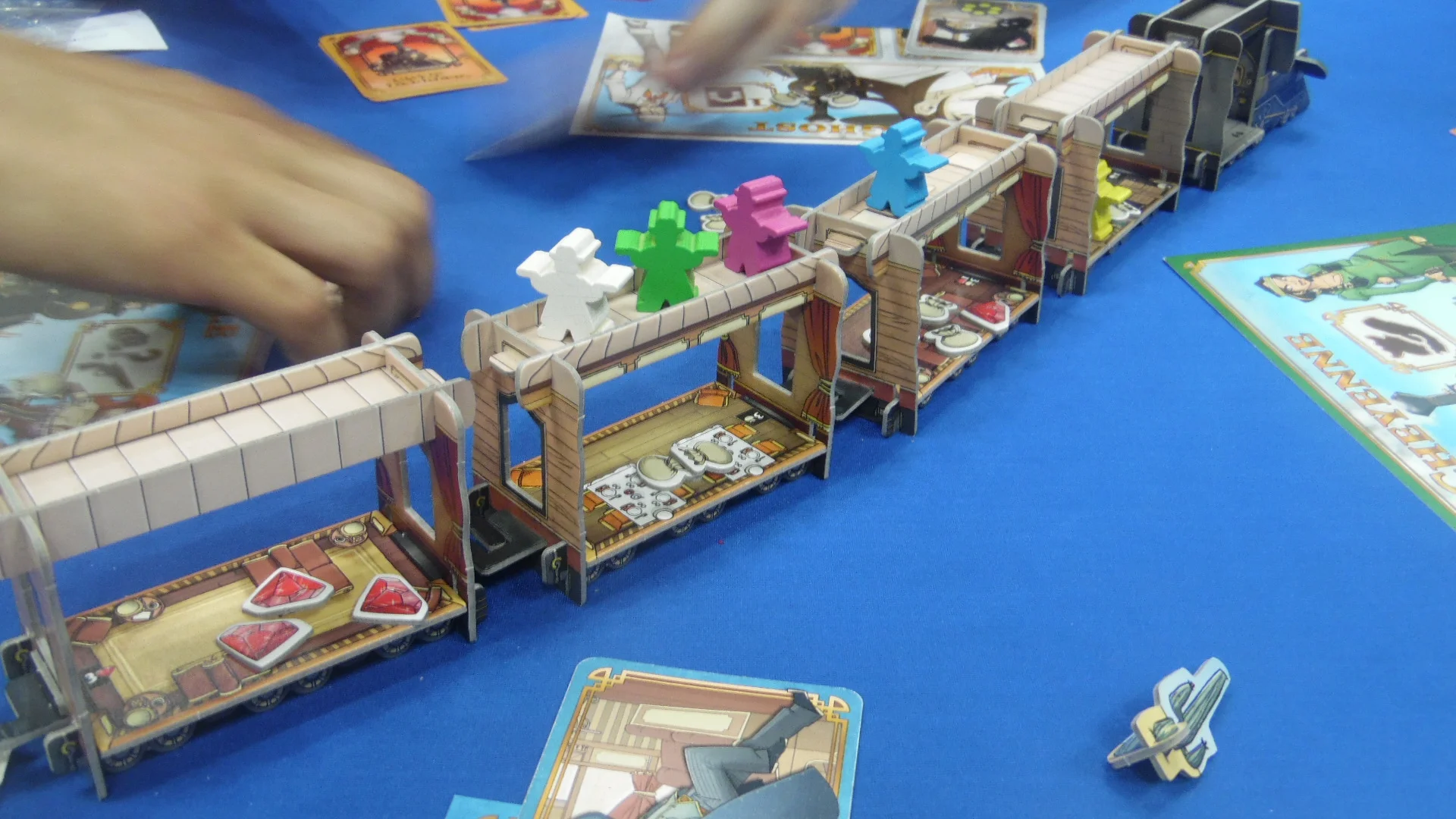
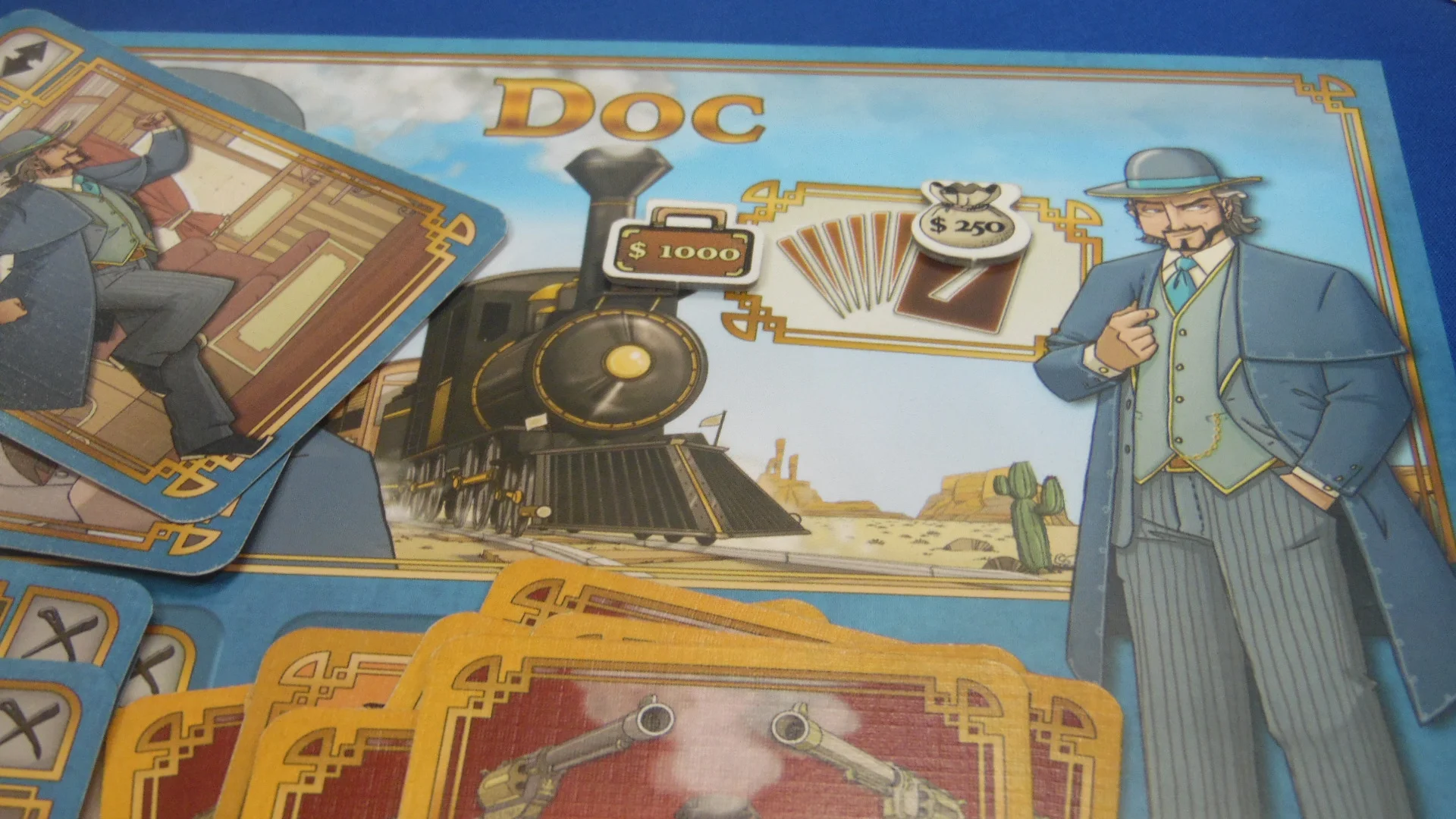
Impressions:
It almost feels unfair to place last years Spiel Des Jahres winner at the top of the list, but this game is so much damn fun I can't help it! I love the taking of turns laying cards down, trying to guess what someone will be trying for, and attacking them trying to sabotage their chances. Then watching it all unfold at the end of each turn makes for exciting action. It really helps that there's an actual train and figures so you can see yourself narrowly escape getting shot by climbing to the top of the train. Sometimes you forget with all the players involved what actually will happen and you'll see something unfold that wasn't supposed to happen but works in your favor. Sometimes you find yourself punching the air all alone in a train car and that's okay because it's just as hilarious.
We all agreed overall this was everyone's favorite game at the con, and in my opinion, it's a definite winner everyone who plays games will enjoy, hands down.





